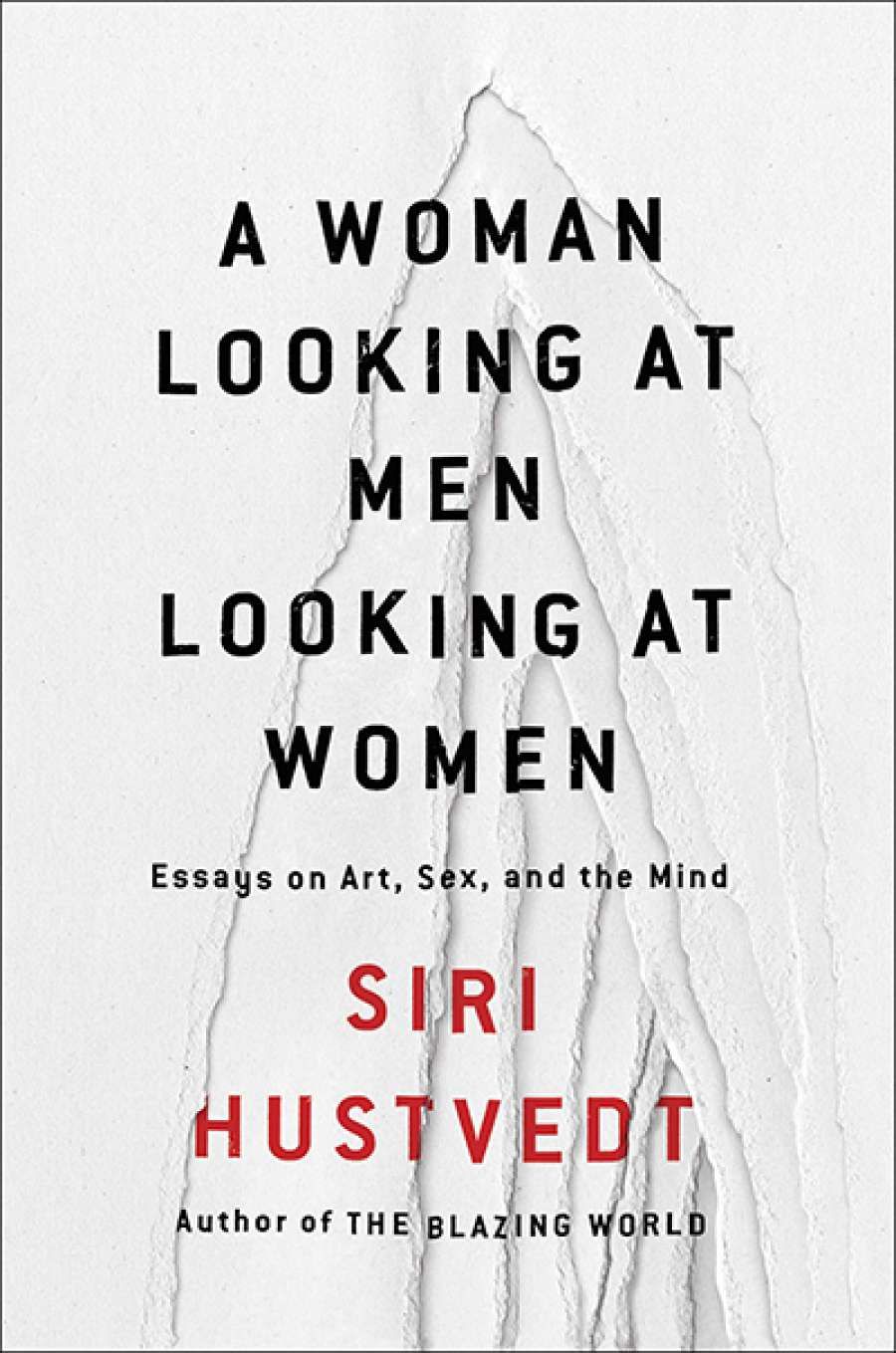
- Free Article: No
- Contents Category: Essay Collection
- Custom Article Title: Jennifer Levasseur reviews 'A Woman Looking at Men Looking at Women: Essays on art, sex, and the mind' by Siri Hustvedt
- Review Article: Yes
- Online Only: No
- Custom Highlight Text:
Siri Hustvedt revels in ambiguity, the in-between places where the certainties of fact fray. In her idea-driven novels such as ...
- Book 1 Title: A Woman Looking at Men Looking at Women
- Book 1 Subtitle: Essays on art, sex, and the mind
- Book 1 Biblio: Sceptre $32.99 pb, 576 pp, 9781473638914
Hers is a mind in motion, trying, testing, prompting responses. Readers familiar with her novels The Blindfold (1992), The Sorrows of an American (2008), and the Booker Prize long-listed The Blazing World (2014) will recognise the erudite sensibility that informs these essays. Both forms display Hustvedt’s insatiable curiosity, alongside her ability to combine ‘hard’ sciences with ‘soft’ arts.
Hustvedt, who is also a lecturer in psychiatry, makes the world infinitely more complex, and, at the same time, more accessible. Well-read across a variety of disciplines, she offers a pathway out of our own ghettos of interest. In ‘Much Ado About Hairdos’, she glides from memories of braiding her young daughter’s hair to the traditions we unthinkingly accept about gender, to the function of hair in our sense of self, and then to men’s revulsion at being perceived as feminine.
Throughout, she encourages active interaction from the reader, inviting us into the essay to have an opinion. For instance, in her essay ‘Mapplethorpe/Almodovár: Points and Counterpoints’, she mixes questions with certainty. One section ends: ‘May I say that Almodovár is dense and complex, that his art is about proliferation, while Mapplethorpe reduces and simplifies? Is this accurate?’ The entirety of the following section reads: ‘Yes.’
Hustvedt describes her method: ‘I see. I feel. I remember. The work in front of me is at once of me and not of me. I muse and I wonder. I interrogate my responses. I take time.’ Her work is generous, even as she refuses to suffer fools and shoddily expressed prose. She is unapologetic and fierce, but also compassionate. Notably, when she conducted an on-stage interview (described in ‘No Competition’) with novelist Karl Ove Knausgaard and he, perhaps inadvertently, insulted her along with all women who write, she transformed her shock into a deeper understanding about his place as a writer of traditionally female literature and the ways in which many (most?) of us unconsciously accept the male as arbiter of quality.
 Siri Hustvedt (photograph by Marion Ettlinger)There are writers you love, writers you sink into as a special treat, and writers you read because they’re good for you. Then there are those who make you rock in your chair, the ideas and phrasings so pleasurably challenging that you can’t sit still while they stir your mind. Hustvedt is a writer you press onto others, the voice you wish would spring to mind when you find yourself in a discussion about art, politics, or feminism: she is solid, questioning, articulate. She has done all the difficult preparation, and she plays like a musician with perfect pitch. That’s not to say that her writing is always fluid: she jolts and stabs in an idiosyncratic voice. Moulded by her diverse influences, she has been enlarged, not subsumed, by them.
Siri Hustvedt (photograph by Marion Ettlinger)There are writers you love, writers you sink into as a special treat, and writers you read because they’re good for you. Then there are those who make you rock in your chair, the ideas and phrasings so pleasurably challenging that you can’t sit still while they stir your mind. Hustvedt is a writer you press onto others, the voice you wish would spring to mind when you find yourself in a discussion about art, politics, or feminism: she is solid, questioning, articulate. She has done all the difficult preparation, and she plays like a musician with perfect pitch. That’s not to say that her writing is always fluid: she jolts and stabs in an idiosyncratic voice. Moulded by her diverse influences, she has been enlarged, not subsumed, by them.
Her essays require attention and slowness and can become overwhelming if read without pause. She provides entryways for readers to follow her intricate musings, but she doesn’t wait for them to catch up. Experienced individually, though, these essays become fuel to move the reader back into the world. She is a natural teacher, someone who needs to share information, to test theories to see what sticks.
Siri Hustvedt concludes the final essay in this wide-ranging collection with the words: ‘we must dance with him’. Her subject is Kierkegaard, but it is a fitting end to a book that invites us to move with her through disparate fields as she pulls us into uncomfortable, constricting, freeing, and exhilarating motions. Yes, we should dance with her.


Comments powered by CComment